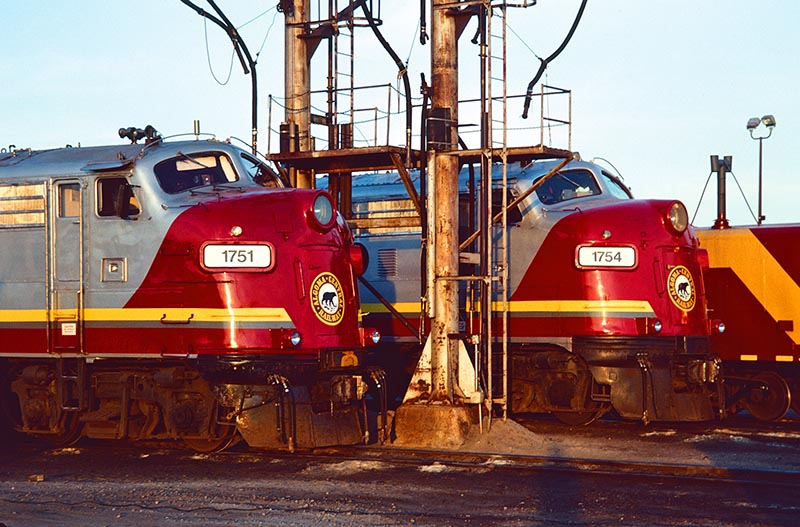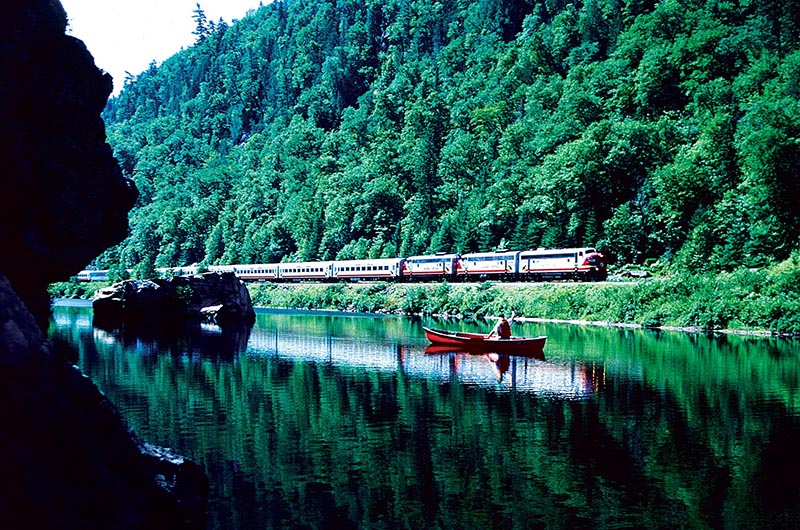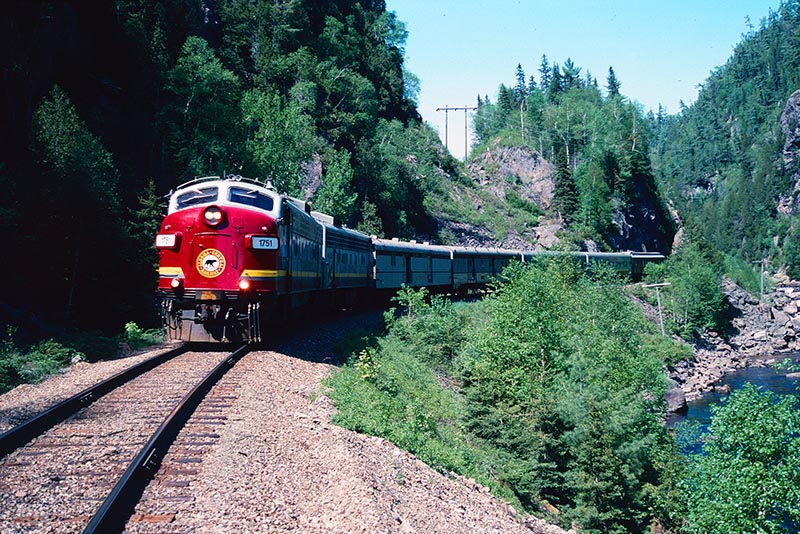 by Steve C. Bradley/photos by the author
by Steve C. Bradley/photos by the author
Beloved by railfans, well known for the rugged Canadian Shield country it traverses, extremely photogenic, and renowned for friendliness, Algoma Central Railway got even better in 1995. It may sound too good to be true, but it did indeed happen when new owner Wisconsin Central added classic GMD F-units to the Algoma Central roster and painted them in a superb maroon, gray, and yellow paint scheme.
Operating 296 miles of main line from Sault Ste. Marie to Hearst, Ont., Algoma Central had always been an EMD road. From its first order of GP7s in 1951, the road continued adding switcher and road units, all in the classic ACR paint scheme (resembling Lackawanna’s gray and maroon with yellow stripes). Being a small road and having only the Sault Ste. Marie maintenance shop, the ACR power was well maintained and presentable, with shop staff taking personal pride in the units.
Wisconsin Central purchased the road and took control on February 1, 1995. Wisconsin Central acquired all of AC’s 23 units, ranging from SW8s, GP7s and 9s, and GP38s to SD40-2s. The ACR power had been regularly assigned to the Sault Ste. Marie–Hearst freights, the Michipicoten Harbour iron ore trains, and, of course, the well-known passenger and Tour Train operations. That regularity would soon change under WC. It was not long before former ACR power was seen working in the U.S. and WC power was drifting north.

Algoma Central F-units 1751 and 1754 await servicing at the sand facility adjoining Steelton Yard in Sault Ste. Marie on June 9, 1997.
Algoma Central’s existing passenger service remained unchanged under WC. The schedule provided for local Trains 1 and 2 operating between Sault Ste. Marie and Hearst, as well as the popular Agawa Canyon Tour Train and Snow Train operations. The local operated either three or four times per week depending on the season, while the Tour Trains were daily during their specific operating periods. While the locals were normally powered by a single GP38-2, the longer Tour Trains saw multiple-unit motive power consists.
In 1995, 11 F-units were acquired from VIA Rail which, due to massive service cuts mandated by the Canadian federal government in 1990, had a surplus of power. Included in the deal were six ex-Canadian National FP9s, one ex-Canadian Pacific FP7, and four ex-CN F9Bs. A feature that fit well with the ACR operation was that the units still had steam generators, a necessity for the ACR passenger car fleet which featured predominantly former CN and CP steam-heated equipment. The A-units became 1750–1756, while two of the Bs were numbered 1761 and 1762. The remaining two were never refurbished, used as parts sources, and later scrapped. The arrival of the classic units allowed a power-short WC to utilize the GP38s throughout the system and dedicate the F-units to ACR passenger service.

Greeted by a canoeist, Algoma Central 1752 and two sisters arrive at the south end of Canyon Park with Train 3 on a stunning July 27, 1999.
The A-units all received 26L brake systems to replace the old 24RL model at WC’s Stevens Point, Wis., shop. Once that work was completed, they headed to the ACR shop at Sault Ste. Marie for painting. Other than the brake system, no other modifications were made or overhaul work performed on these high mileage units…



